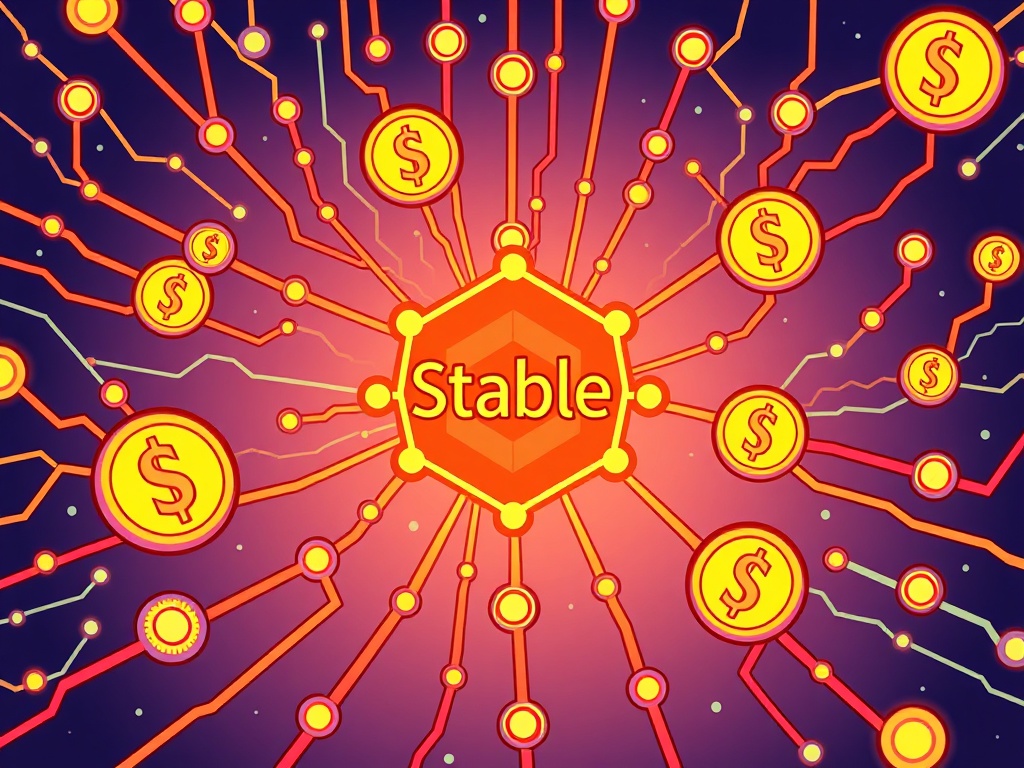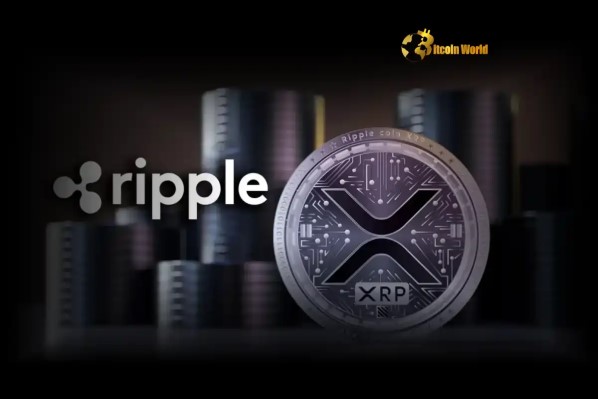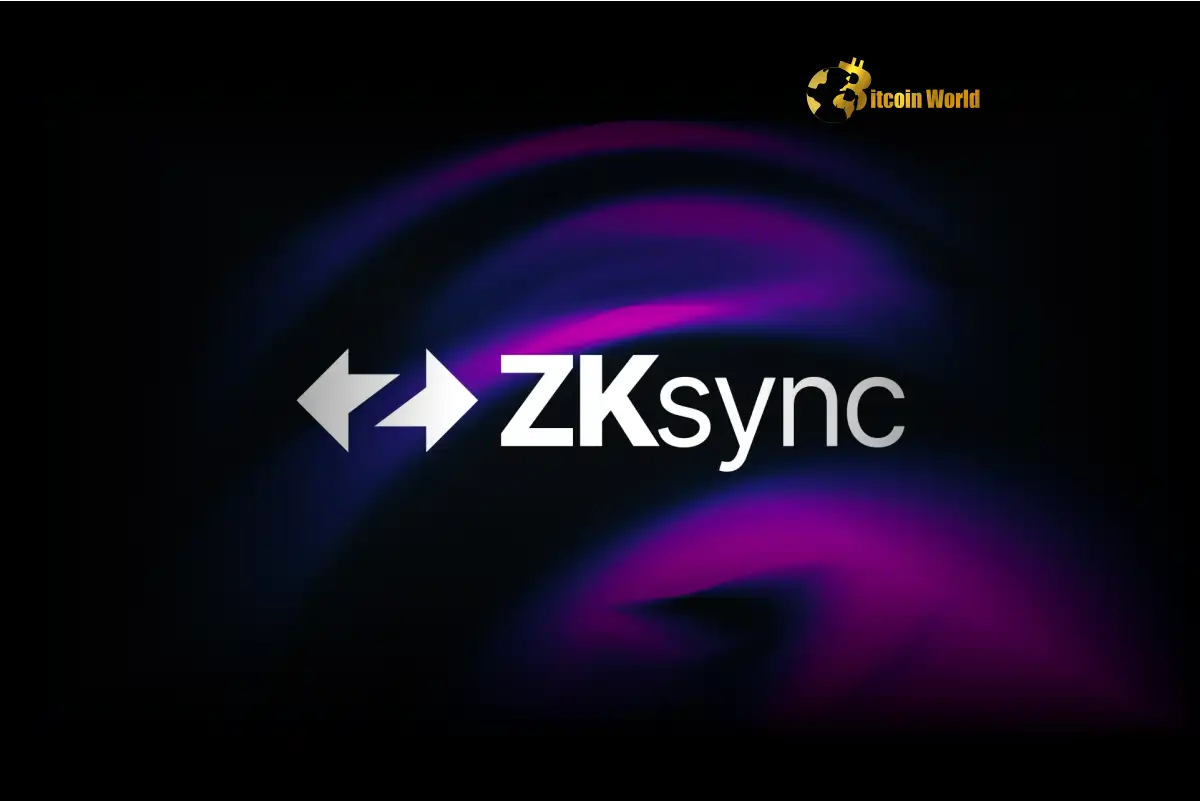BitcoinWorld

USDT-based Blockchain: Stable Secures Astounding $28M to Revolutionize Payments
In the dynamic world of cryptocurrency, innovation never truly sleeps. A new player, Stable, is making significant waves, having successfully raised an astounding $28 million in a seed round. This substantial funding is earmarked for a bold vision: the creation of a dedicated USDT-based blockchain, poised to redefine how we think about stablecoin payments.
What is Stable, and Why a Dedicated USDT-based Blockchain?
Stable is not just another blockchain project; it’s a layer-1 network meticulously designed from the ground up with a singular focus: stablecoin payments. Imagine a superhighway built exclusively for stablecoins, ensuring transactions are fast, efficient, and cost-effective. This is the promise of Stable.
The decision to build a dedicated USDT-based blockchain is strategic and reflects a deep understanding of the current crypto landscape. While stablecoins like USDT are widely used, they often operate on general-purpose blockchains that can suffer from:
- Congestion: High transaction volumes from various dApps can slow down stablecoin transfers.
- High Fees: Network fees can become prohibitive for frequent, small-value stablecoin payments.
- Fragmentation: Stablecoins exist across multiple chains, leading to liquidity silos and complex cross-chain transfers.
Stable aims to address these challenges by providing a bespoke environment where stablecoins, particularly USDT, can thrive without the usual bottlenecks. This dedicated infrastructure is designed to offer unparalleled speed, lower costs, and enhanced reliability for stablecoin transactions.
The Strategic Choice: USDT as Native Gas Token
One of the most intriguing aspects of Stable’s design is its decision to use USDT as its native gas token. This is a significant departure from the norm, where native cryptocurrencies (like ETH on Ethereum or SOL on Solana) typically power network transactions.
Why USDT? The choice is rooted in practicality and user experience:
- Simplicity for Users: Users no longer need to hold a separate volatile asset just to pay for transaction fees. If you’re transacting in USDT, your fees are also paid in USDT, streamlining the user experience significantly.
- Predictable Costs: Since USDT is pegged to the U.S. dollar, transaction fees become much more predictable and stable, removing the volatility risk associated with native gas tokens.
- Leveraging Liquidity: USDT is the largest stablecoin by market capitalization and boasts immense liquidity. By integrating it as the native gas token, Stable taps into this vast existing ecosystem, potentially accelerating adoption.
- Enhanced Utility: This move elevates USDT’s utility beyond just a store of value or medium of exchange, embedding it deeper into the operational mechanics of a blockchain.
This innovative approach could significantly lower the barrier to entry for new users and businesses looking to leverage stablecoins for everyday payments and remittances.
Who’s Fueling Stable’s Ambitious Vision for a USDT-based Blockchain?
The success of a new blockchain project often hinges on the quality and commitment of its backers. Stable’s seed round saw participation from some of the most prominent names in the crypto and traditional finance sectors, lending significant credibility to its endeavor:
- Bitfinex: As a leading cryptocurrency exchange and a close associate of Tether (the issuer of USDT), Bitfinex’s lead investment is a powerful endorsement. This suggests a strategic alignment that could facilitate deeper integration and support for the USDT-based blockchain.
- Hack VC: A venture capital firm known for backing innovative blockchain and Web3 projects, Hack VC’s involvement signals confidence in Stable’s technological foundation and market potential.
- Franklin Templeton: The inclusion of a traditional finance giant like Franklin Templeton is particularly noteworthy. It underscores a growing institutional interest in the underlying infrastructure of digital assets and stablecoins, highlighting the potential for real-world applications and broader adoption.
The diverse nature of these investors – from crypto-native giants to established financial institutions – speaks volumes about the perceived value and potential impact of Stable’s project.
The Phased Rollout: A Strategic Roadmap for the USDT-based Blockchain
Building a robust blockchain takes time, careful planning, and meticulous execution. Stable has outlined a multi-phase rollout strategy, demonstrating a measured and responsible approach to development:
| Phase | Timeline | Key Deliverables |
|---|---|---|
| Phase 1: Infrastructure Development | Ongoing | Laying the foundational code and core architecture for the network. |
| Phase 2: USDT Aggregator | Late 2024 | Launch of a tool to optimize USDT liquidity and transfers across various networks, preparing for the dedicated blockchain. |
| Phase 3: Developer Tools | 2026 | Release of SDKs, APIs, and documentation to enable developers to build applications on Stable. |
| Phase 4: Mainnet Launch | Late Q3 / Early Q4 2025 | The full public launch of the USDT-based blockchain, opening it up for widespread use. |
This structured approach allows Stable to build a robust, secure, and user-friendly network, ensuring that each component is thoroughly tested before widespread deployment. The staggered timeline also provides ample opportunity for community feedback and iterative improvements.
What Benefits Can We Expect from This New USDT-based Blockchain?
The introduction of a dedicated stablecoin blockchain like Stable promises a range of compelling benefits for both individual users and businesses:
- Lower Transaction Costs: By optimizing for stablecoin transfers, Stable aims to drastically reduce the fees associated with sending and receiving USDT, making micro-transactions and frequent payments more viable.
- Enhanced Speed and Throughput: A purpose-built network means less congestion and faster confirmation times for stablecoin transactions, crucial for real-time payments and remittances.
- Streamlined User Experience: The use of USDT as a native gas token simplifies the payment process, removing the need for users to acquire and manage a separate, volatile asset for fees.
- Increased Stability and Reliability: A dedicated network reduces the risk of disruptions from other dApps or network activities, offering a more stable environment for value transfer.
- New Use Cases: The focus on stablecoin payments could unlock new applications in areas like cross-border trade, payroll, e-commerce, and DeFi protocols specifically optimized for stable assets.
For businesses, this could translate into more efficient treasury management, reduced operational costs for international payments, and new revenue streams built around stablecoin utility.
Are There Challenges on the Horizon for Stable?
While the vision for a dedicated USDT-based blockchain is compelling, the path forward is not without its hurdles. The cryptocurrency space is highly competitive and rapidly evolving, presenting several challenges for Stable:
- Competition: Stable will face stiff competition from established Layer-1 blockchains (like Ethereum, Solana, Avalanche) that already host significant stablecoin liquidity and user bases. Even other emerging networks are vying for stablecoin dominance.
- Regulatory Scrutiny: Stablecoins, particularly those as dominant as USDT, are increasingly under the microscope of global regulators. Any regulatory changes or restrictions could impact Stable’s operations and adoption.
- Adoption and Network Effect: Building a robust network requires not just technology but also a vibrant ecosystem of users, developers, and dApps. Gaining significant adoption against incumbent networks will be a key challenge.
- Security: As a new Layer-1, Stable will need to prove its security and resilience against potential attacks, which is paramount for a network handling significant value in stablecoins.
Overcoming these challenges will require not only continued technological innovation but also strategic partnerships, strong community engagement, and adaptability to the evolving regulatory landscape.
The Future of Stablecoin Payments: A Lasting Impression
Stable’s ambitious project to launch a dedicated USDT-based blockchain marks a significant step towards a more efficient and accessible stablecoin ecosystem. By focusing on the core utility of stablecoins – stable value transfer – and innovating with USDT as its native gas token, Stable is positioning itself to address critical pain points in the current crypto landscape. The backing from industry giants like Bitfinex and Franklin Templeton further solidifies its potential to make a meaningful impact.
While challenges lie ahead, the clear roadmap, strategic design, and strong financial backing suggest that Stable could indeed revolutionize how we use stablecoins for payments, remittances, and a myriad of other financial applications. This is not just about a new blockchain; it’s about building a future where digital payments are faster, cheaper, and more reliable for everyone.
Frequently Asked Questions (FAQs)
- 1. What is Stable’s primary goal?
- Stable’s primary goal is to build a dedicated layer-1 blockchain specifically optimized for stablecoin payments, aiming to make transactions faster, cheaper, and more efficient.
- 2. Why did Stable choose USDT as its native gas token?
- Stable chose USDT to simplify the user experience by eliminating the need for a separate volatile asset for fees, provide predictable transaction costs due to USDT’s peg, and leverage USDT’s immense liquidity and market dominance.
- 3. Who are the key investors in Stable’s seed round?
- The seed round was led by Bitfinex and Hack VC, with significant support from Franklin Templeton and other investors, highlighting a blend of crypto-native and traditional finance backing.
- 4. When is Stable’s mainnet launch expected?
- Stable’s mainnet launch is anticipated in late Q3 or early Q4 of 2025, following phases of infrastructure development, a USDT aggregator launch, and developer tool releases.
- 5. How will Stable benefit stablecoin users?
- Stable will benefit users through lower transaction costs, enhanced speed and throughput for payments, a streamlined user experience by paying fees in USDT, and increased stability for value transfers.
- 6. What are the potential challenges Stable might face?
- Key challenges include intense competition from existing blockchains, navigating evolving stablecoin regulations, achieving widespread adoption and network effects, and ensuring robust security for the new Layer-1 network.
Did you find this article insightful? Share it with your friends and colleagues on social media to spread the word about Stable’s groundbreaking vision for a USDT-based blockchain!
To learn more about the latest crypto market trends, explore our article on key developments shaping stablecoin institutional adoption.
This post USDT-based Blockchain: Stable Secures Astounding $28M to Revolutionize Payments first appeared on BitcoinWorld and is written by Editorial Team





